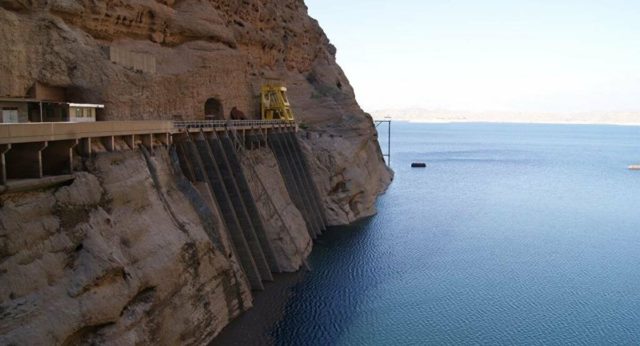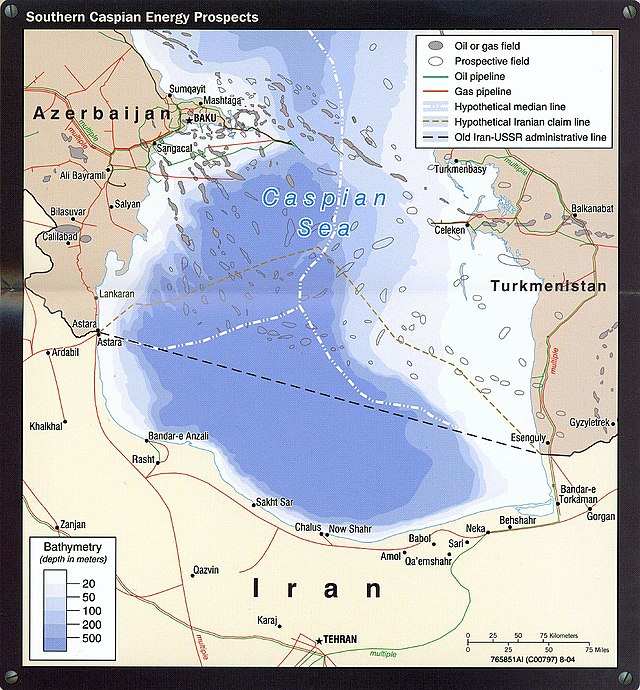
Iran Balks at Definition of Offshore Territorial Baselines in Caspian Sea
Publication: Eurasia Daily Monitor Volume: 18 Issue: 88
By:

Following decades of wrangling and negotiations, Iran, Kazakhstan, Azerbaijan, Russia and Turkmenistan signed the Convention on the Legal Status of the Caspian Sea, in Aktau, on August 12, 2018. According to the domestic laws of the five littoral states of the Caspian Sea, the text of the Convention, made up of 24 articles, must be approved by their national parliaments. So far, only the parliaments of Russia, Azerbaijan, Kazakhstan and Turkmenistan have ratified the Convention, whereas the Iranian government has yet to send the draft law to the legislature. Until the text of this treaty is approved by Iranian lawmakers, it legally (Article 22) cannot be implemented by the Caspian littoral states (Kremlin.ru, August 12, 2018). For this reason, Russian Foreign Minister Sergei Lavrov mentioned earlier this spring that “Iran should ratify the Convention on the Convention on the Legal Status of the Caspian Sea as soon as possible so that the Convention can come into force (Iran International, April 8, 2021).
The main reason why the Iranian government has still not sent the draft Convention for ratification relates to ongoing expert and technical negotiations related to determining the “baselines” of the Caspian Sea. President Hassan Rouhani and his government are on record stating that it will not send the draft Caspian Convention to the parliament until all negotiations over baselines are resolved (President.ir, August 12, 2018; see below).
The issue goes back to the provisions of Article 1 of the treaty, which mentions both a “Normal Baseline” and “Straight Baselines” as methods for determining the breadth of a state’s inland and territorial waters. And due to the concave shape of the Iranian coast along the southern edge of the Caspian, Tehran’s main challenge is this definition of “Straight Baselines” within the document. According to Article 1 of the Convention, “straight baselines” refer to straight lines joining relevant/appropriate points along the coast and forming the baseline at locations where the coastline is indented or where there is a fringe of littoral islands in its immediate vicinity. But notably, the exact methodology for establishing these straight baselines is supposed to be determined in a separate agreement among all parties to the Convention. If the configuration of the coast puts a littoral state at a clear disadvantage in determining its internal waters, that will be taken into account in developing the above methodology in order to reach consent among all the parties (Kremlin.ru, August 12, 2018).

Following the signing of the Caspian Sea Convention, the Iranian Ministry of Foreign Affairs issued an interpretative declaration on August 13, 2018, and announced that “the third paragraph of the section on the definition of Straight Baselines in Article 1 of the Convention on the Legal Regime of the Caspian Sea refers to the situation of the coast of the Islamic Republic of Iran in the Caspian Sea. The purpose of writing this paragraph was to consider and pay attention to the special situation of Iran” (IRNA, August 13, 2018). The interpretative declaration was directly motivated by Iran’s specific geographical location on the Caspian Sea. Due to this body of water’s macro pattern of surface currents, Iran effectively finds itself downstream for much of the year from Caspian waters adjoining the Russian Federation (upstream) and Azerbaijan, Kazakhstan and Turkmenistan (middle stream). Additionally, Iranian littoral waters are the deepest and saltiest in the Caspian Sea, and, as mentioned above, the shape of Iran’s Caspian coast is quite concave. Furthermore, Iran has the shortest border with the Caspian Sea, measuring just 657 kilometers of coastline.
All those geographical factors have a negative impact on determining straight baselines for Iran. Moreover, the Iranian coastline lacks cuts and coastal promontories that can be connected as baseline points of the straight baselines. In contrast, Iran’s two Caspian neighbors, Turkmenistan and Azerbaijan, have convex coasts with advanced points and numerous islands that provide them with sufficient baseline points for drawing straight baselines—thus extending their territorial waters compared to Iran. These conditions led Tehran to demand a special privilege in determining the straight baselines in the last stage of negotiations before the signing of the Convention in Aktau. (Jplsq.ut.ac.ir, Spring 2020). Iran’s request was accepted at the Caspian littoral foreign ministers’ meeting in December 2017. As noted above, this is referenced in Article 1 of the 2018 Convention, which Iran then reaffirmed by issuing an interpretative declaration mentioning special geographical conditions.

These circumstances clearly show that Tehran is extremely concerned about the curvature of the coastline that could negatively impact Iran’s share of the Caspian Sea, surface division, bed and subfloor. Indeed, the straight baselines are directly related to the amount of internal water, territorial water, contiguous zone, the exclusive economic zone and potentially the continental shelf in the Caspian Sea. Technical and expert negotiations on determining the baselines have been going on for about two years and have yet to be concluded. And due to the extremely elevated sensitivity of Iranian society to the issue of the legal regime of the Caspian Sea, it seems highly unlikely that the government will send the law on the legal regime of the Caspian Sea to the parliament for ratification before the end of the baseline negotiations. Meanwhile, President Rouhani’s term is set to end in August 2021 (with no ability to run again), making it highly unlikely that his government will make any moves regarding the Caspian Sea Convention in the next few months.



